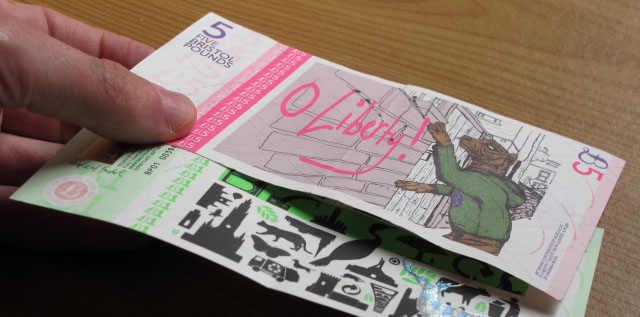
It’s the kind of alternative, community-based system of exchange that is now in a rapid growth phase, researchers believe, as people respond locally to fight challenges like reducing CO2 emissions.
Unlike internet-based cryptocurrencies such as Bitcoin, these so-called complementary or community currencies are often centred around a specific region or conviction. The Belgian scheme, called Limburg.net, is run in conjunction with the local waste company and is focussed on getting people to behave sustainably.
‘The idea is to motivate people to have more environmentally friendly behaviour,’ said Dr Georgina Gómez, a lecturer in local development at Erasmus University in Rotterdam, the Netherlands.
‘This is something useful, you help each other out, you build this community … and at the same time this is something that is good for you.’
Dr Gómez is supervising the EU-funded MICCO project, which was born out of the Greek economic crisis of the start of the decade. Its objective is to use modelling techniques to analyse what makes a successful community currency.
‘People feel that … because of the failings of the capitalist system in general, something needs to be done,’ she said.
One example is the Bangla-Pesa scheme, set up in Mombasa, Kenya, in 2013 to help tackle poverty and make up for a shortage of Kenyan shillings.
Member businesses are given free Bangla-Pesa when they join the scheme, which they can then exchange for goods and services.
‘It’s helping micro, very, very small entrepreneurs, people who produce goods and services at home in extreme poverty,’ said Dr Gómez. ‘It has helped them to create more business, to be able to pay their children’s school fees.
‘If we could learn from these examples, I think that would be extremely useful.’
An EU-funded project, CCIA, produced a book on how to set up alternative currency scheme.
Wave
By their nature, each community-based currency remains small enough not to fall under official financial regulations. However, the number of community currencies has already grown from a few hundred to a few thousand over the last 10 years.
“
‘You help each other out, you build this community… and at the same time this is something that is good for you.’
Dr Gómez believes that we are in the midst of a wave of growth in these schemes as people realise that they can tackle climate change by promoting sustainable behaviour or help to integrate refugees into European society.
It’s a belief shared by Dr Jose Luis de La Rosa Esteva, from the University of Girona, Spain, whose EU-funded project VirCoin2SME interviewed companies involved in alternative currency schemes that have been designed to help support local businesses.
The idea behind these types of schemes is that they encourage people to shop locally, and the project put together a series of recommendations for small businesses, which they tested in a pilot.
‘Complementary currencies create a circle of purchases,’ he said. ‘These complementary currencies lead to an increase of up to 10 % of the turnover of companies.’
These kinds of clear economic benefits for small retailers will be a strong incentive, he thinks, for the number of schemes to grow rapidly.
‘Because they are specifically targeted to a community, a region, a city … they will tend to be small,’ he said. ‘But many will come up.’

If you liked this article, please consider sharing it on social media.



